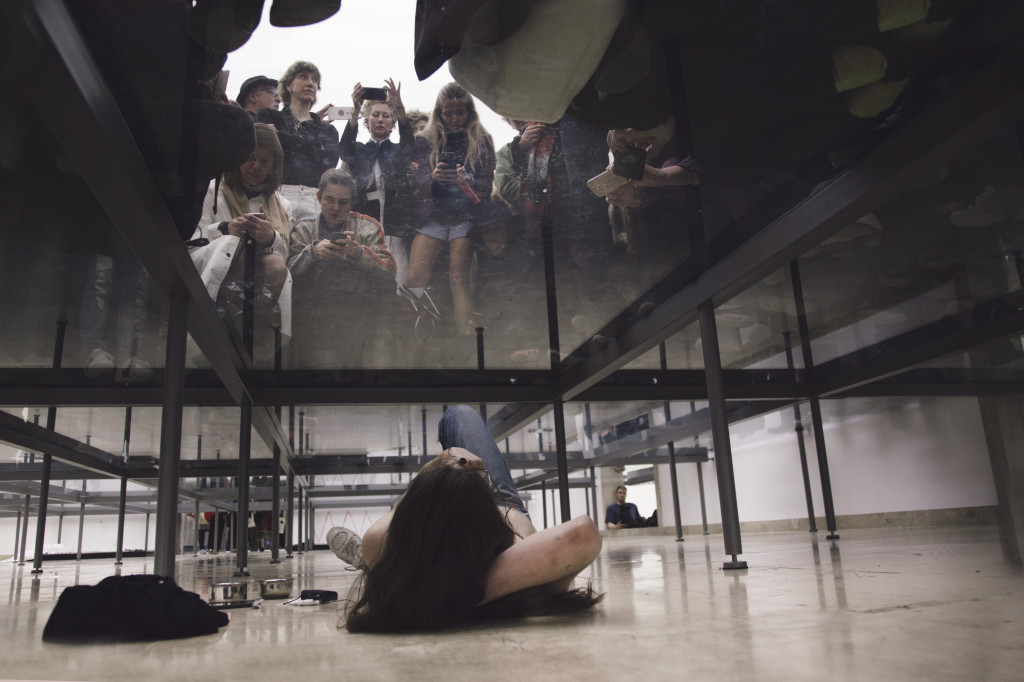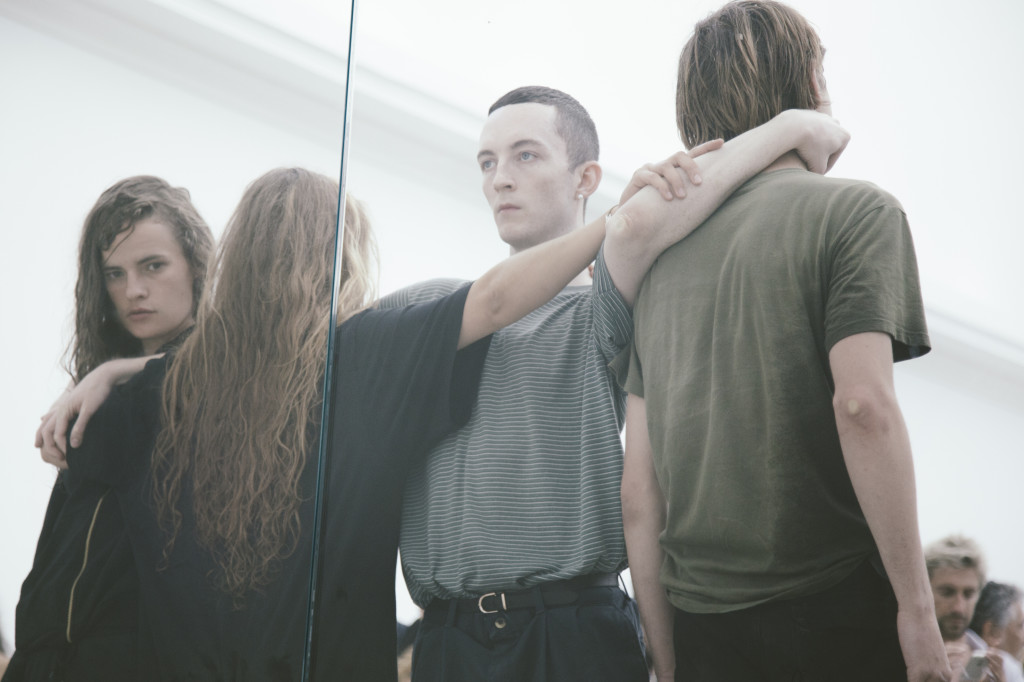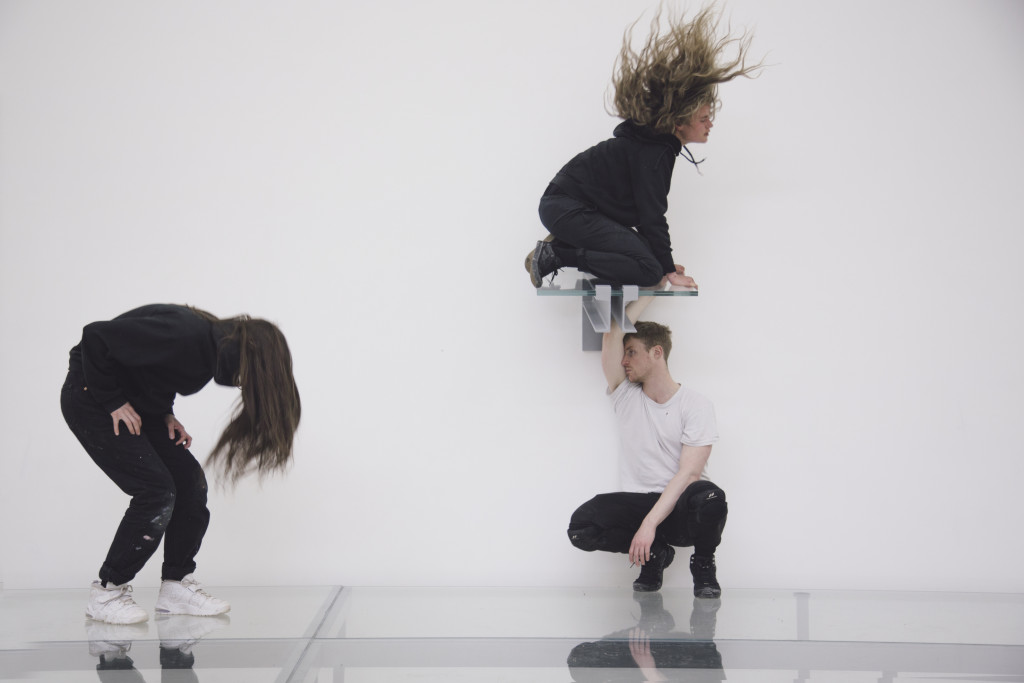Watching You Watching Me: Anne Imhof at the Venice Biennale
by MK Meador
Suddenly the lyric from a Bill Withers song finds its way into the German pavilion at the 2017 Venice Biennale, as part of Anne Imhof’s FAUST performance. Curated by Susanne Pfeffer, FAUST was originally conceived to be a five-hour durational performance enacted by five men and women each day, seven days a week. But after the opening week, this proved too ambitious, and the schedule was updated to be a two-hour performance. Unlike the constraints that face other, more typical installations across the Biennale, performance is an inherently adaptive media. Both the setting and content of FAUST gives an audience a thrillingly complex and continually evolving performance—discussing power dynamics, violence, resistance and freedom.

As the winner of the Golden Lion Award for the second consecutive Biennale, one should expect a line to form well before the posted noon start time. The extra time outside is worth it, if only to see the fascinating contrast between the severe austerity of the German building – compared to the full-blown neon Vegas treatment given by artist Cody Choi’s Venetian Rhapsody and installed on the exterior of the Korean Pavilion next door.
Once inside, the space immediately disorients the viewer. It is a dizzying adjustment—to take in the elevated glass floor that connects the building’s three rooms. Beneath the glass floor, there is a scattered array of “sculptural touches” along with ad hoc collections of objects: hoses, water bottles, paint cans, black plastic covered mattresses. Installed around the walls on the main glass floor are occasional glass shelves with thick grey braces, tilted downward and used by the performers to perch above the audience.

© Photography: Nadine Fraczkowski. Courtesy: German Pavilion 2017, the artist
The rhythms of the performers, alternating movements, and combinations of bodies slow and fast, keep their audience in constant motion. This implicates each viewer as a body in a shared space, on a similar plane of existence. FAUST is powerful because it requires, actually demands, its audience to continually evaluate and reassess their physical position in relation to the performers, to the other bodies and with the space.
As a setting, the installation and layout of space move performance in an exciting new direction. Imhof has created layers of transparent stages to allow for full multidimensional activation of the space. Waiting and watching for the performers in full 360 degrees offers a thrilling mix of anticipation and fear—especially when they clip themselves into harnesses and violently move along glass shelves high above the crowd. FAUST performers also make use of water and fire, and a personal highlight was when a taller brunette performer scrawls under the glass, on the ground floor and slowly smears a clear gel, then lights a small fire beneath a seated group of perplexed viewers.

© Photography: Nadine Fraczkowski. Courtesy: German Pavilion 2017, the artist
Despite the dynamism of the performers and the setting, many people weren’t witnessing, they were filming. It becomes clear that watching in all of its forms—mediated or otherwise—is at least one part of Imhof’s message. Each performer directly and forcefully searches for eye contact with onlookers at various moments throughout and they make clever use of mirrored glass to refract their gaze off the reflective surface to surreptitiously watch (and be watched by) nearby viewers. Confrontational and direct, the combinations of bodies, the connection with the audience and the layers performance are all reminders of the perverse connections and struggles for power that universally link humankind.
Anne Imhof, FAUST at the German Pavilion of the Venice Biennale, runs through November 26, 2017.